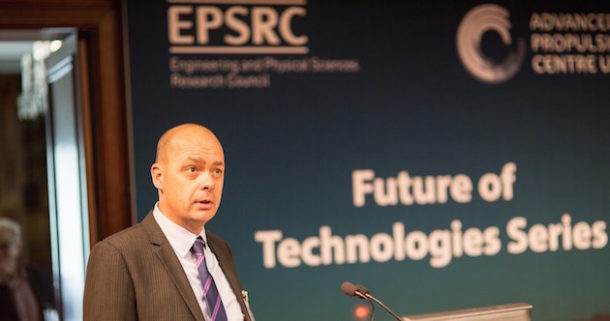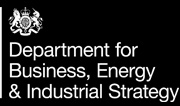
APC Event Review: Is it time for the ICE to RIP?
What will be the future role of internal combustion engines as EVs and hydrogen vehicles move in from the margins?…
The Engineering and Physical Sciences Research Council and the UK’s Advanced Propulsion Centre (APC) recently hosted a one-day conference in London entitled “RIP ICE?” The focus of the debate centred on the future for the internal combustion engine (ICE), and when it might be time to lay the much-optimised, century-old technology to rest.
Debate chair and APC Chief Executive Ian Constance noted that the UK currently produces almost 2.5 million engines per year. “That’s a lot more than the number of vehicles that we produce” he said. “If they are going to disappear we need to think about what we’re going to do next.”
Professor Neville Jackson, Chief Technology Officer at engineering firm Ricardo gave delegates an overview of today’s challenges. He echoed Constance’s observation, noting that engine production adds about £7bn to the UK economy. “We’re pretty good at producing advanced engines and probably don’t want to lose that” he said.
Focusing on the issue of air quality, Jackson highlighted the deadly consequences of particulate and nitrogen oxide (NOx) emissions, citing World Health Organisation estimates of 3.7 million premature deaths per year. However, cleaning up transport emissions with readily-available technology would substantially increase the cost of individual vehicles.
The result? “People will delay buying new cars, putting lots of people out of work” Jackson predicted. He added that incoming Real Driving Emissions testing for NOx, due to become part of homologation testing from late 2017, is likely to lead to increased costs that may harm uptake of more efficient cars.
“We can always fit after-treatment, but it’s better to have virtually no NOx in the first place” he observed.
Jackson added that future solutions and legislation need to proceed from a system-wide standpoint that assesses full-lifecycle impact: “A good example of missing lifecycle metrics was the early enthusiasm for biofuels, where we completely ignored the lifecycle impacts. Let’s not go down that route again.”
He noted that the full lifecycle consequences of a widespread shift to batteries and electric motors remains poorly understood.
In a Q&A session a panel of experts pondered the role of hydrogen fuel cells in providing cleaner road transport. The feasibility of using off-peak electricity to manufacture hydrogen via electrolysis was raised as a potential solution.
Jackson suggested that “feeding hydrogen into the gas grid is probably more efficient than putting it into a car”, while Professor David Greenwood of the University of Warwick said: “We only have an electricity surplus overnight today because we have a grid with no storage – how will that play out in the long term?”
Professor Chris Brace from the University of Bath added that production of synthetic fuels using hydrogen is likely to be more efficient than using gaseous hydrogen for road transport.
During his presentation Dr Doug Parr, Chief Scientist and Policy Director at environmental group Greenpeace UK, told the conference that with 20 cities in the UK breaching legal limits for air quality, pressure to reduce automotive emissions is set to become a more urgent political issue.
“Falling emissions from power generation in the UK have made transport the biggest emitter” he noted, adding that transport emissions have in fact been slowly rising over recent years.
Parr said there are no simple steps to improve air quality. Road transport accounts for 48% of NOx emissions in central London, for example, but even the radical step of banning diesel engines would not bring air quality within legal limits, Parr argued.
Asked what he would propose instead to reduce pollution, Parr said he would mandate EV charging provision in car parks; mandate procurement of zero emission vehicles among public bodies; and empower local authorities to toughen license conditions for taxis and buses. “Preferential parking for low-emission cars can really drive change” he added.
Parr also argued that the government must get off the fence and begin backing solutions. “You can be technology-neutral only up to a point” he said. “You can’t be neutral when it comes to the need for refuelling infrastructure. You have to make choices. A choice is needed now about hydrogen – is it too expensive or does it have a role to play?”
Adam Chase, director of consultancy E4tech, described the difficulties of switching from one infrastructure to another. “At the time when horses were being replaced by horseless carriages, questions were asked in Parliament about the damaging impact on the equine industry that this new disruptive technology would cause” he noted. “There was lock-in, but nonetheless the transition occurred.”
He added that while previous transitions from horses to engines, and from wood to coal to oil, came about through pure economics and utility, these forces would not suffice for the next transition. “Climate change is a dominant driver, but there’s also air quality and energy security” he said.
Chase added that tackling the big problems facing society in order of difficulty – tackling electricity supply, then heating, then transport – “doesn’t necessarily lead you to the correct long-term solution”.
He added that events might overtake that order of precedence in any case. “We are approaching at some speed the point where inflicting pollution on others through tailpipes is going to be seen as unpopular as other things that have been banned, such as smoking” Chase said, adding that pressure will build because “there are many more citizens than drivers” in cities.
Chase said that synthetic fuels, which use zero-carbon energy, hydrogen and waste CO2 to create fuels like methanol, are likely to be important for the future. He noted that liquid fuels are particularly helpful for transporting energy from sites with abundant solar energy to other locations where there is greater demand.
However, he warned that even zero-carbon technologies will not be sufficient to arrest global warming, and that carbon-negative processes, which undertake carbon capture and storage (CCS), will also be needed.
“If I have liquid fuel and want to turn it into mechanical work, the internal combustion engine still has lot to commend it” Brace said. “And if you do CCS, you can create a negative carbon process.”
Speakers also discussed the efficiency of liquid fuels in terms of energy transfer rates, noting the difficulty of providing the 100 megawatts of electricity supply needed to transfer energy at the same rate as a typical motorway service station.
“The best place for energy dense fuels is where energy density is needed most” observed Chase.
Morgan echoed that point in his presentation, noting that matching the range capability of a 44-tonne diesel lorry would require more than 30 tonnes of battery, leaving only about 12 tonnes for freight. “EVs as HGVs are just not feasible” he said.
Instead, Morgan said, heavy duty applications are likely to require internal combustion engines for the foreseeable future. The focus should be on redesigning how they function to improve efficiency, he argued.
Split-cycle engines, which carry out compression and combustion processes in separate cylinders, hold a lot of promise, Morgan said. “We can get to 60-ish per cent efficiency in the lab. The challenges are price and durability” he added.
He also noted that to date we have tended to optimise engines around the fuels available. “What if we did it the other way around” he asked.
Addressing the central question of the debate – is it RIP for ICE – Morgan concluded: “I think probably not yet. Where we have to move large loads over long distances, then electric isn’t the right solution.”





